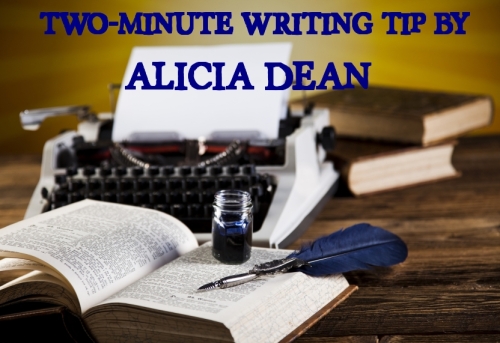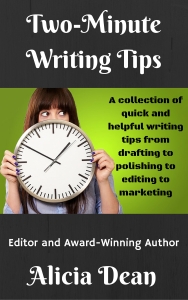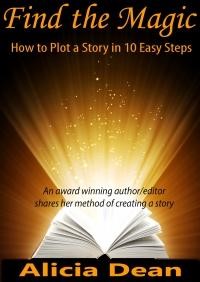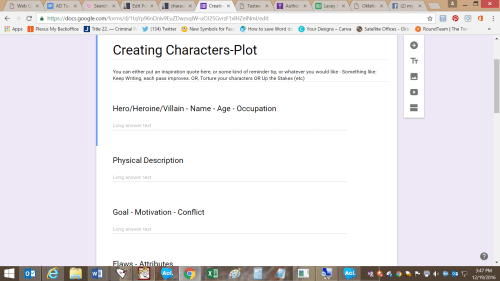Got two minutes? Then check out this week’s quick tip ~ How to describe a character in his or her POV without using a mirror…
Hello and welcome…I am a freelance editor and an editor for The Wild Rose Press, as well as an author. I often struggle with my own writing, and I have found that sometimes, a little reminder of ways to improve the process can be helpful, so, I like to share these moments of brilliance with others :). But, in this busy world of ours, who has time for pages and pages of writing tips? That’s why I’ve condensed mine down to quick flashes you can read in (approximately) two minutes. Enjoy…
Disclaimer: All of my tips are suggestions, and are only my opinion. And, for the most part, there are exceptions when going against my advice will make your story read better. Take what works, leave the rest.
It’s rather difficult to describe a character, when you are in that character’s Point of View. It’s tempting to have a character look in a mirror and describe what they see, or just describe themselves in a way that really isn’t natural, such as:
(We’re in Sally’s POV):
“Sally brushed back her silky blonde hair, which hung down her back in luxurious waves. Her gorgeous emerald eyes filled with tears as her curvaceous body settled onto the sofa.”
Doesn’t really work, does it? The character seems vain and self-absorbed.
Here are a few suggestions/ideas to get you through the tricky task of POV character description:
Have the character think of themselves in comparison to another:
She’d always envied her sister’s sleek blonde hair. Her own dark unruly curls gave her the perpetual appearance of having just climbed out of bed.
Have another character comment on their looks:
“Your eyes are not really blue, and not really green…more a combination of the two, like a Caribbean sea. I could look into them for hours.”
In action, which can be done several ways:
She pushed her glasses further up her nose.
She slid her jeans on over her hips, wishing she had a little more ‘hip’ to fill them out.
He rubbed his hands over the day’s worth of whiskers covering his jaw.
He ducked his head under the doorframe and stepped into the room.
Her hand looked so small wrapped in his.
She twisted her long hair into a knot on top of her head.
I quickly applied eyeliner, grateful I’d inherited my mother’s complexion so I could get by with little make up.
Introspection:
People think because I’m small, I’m a pushover.
I rolled my eyes. Another man who couldn’t see past the blonde hair and blue eyes to the intelligent woman beneath.
It wouldn’t be the first time someone was intimidated by his size.
Don’t describe while you’re in that character’s POV. Wait and let another character describe them when you are in the other character’s POV
Describe sparingly. You need very little description, and you can sprinkle it throughout when it can come naturally, rather than providing an entire list of features all at once. This way you can avoid author intrusion, or having a self-absorbed, egotistical character.
Any tricks you use that you’d like to share?
Until next time…Happy Writing!
~*~*~*~*~*~*~*~*~*~*~*~*~*~*~*~*~*~*~*~*
ONLY 99 cents!!
(Click on the cover to be taken to the Amazon Buy Page)
~*~*~*~*~*~*~*~*~*~*~*~*~*~*~*~*~*~*~*~*
*** If you would like to send me a few sample pages (around 7500 words or so, even though I will not edit that many on the blog. It just gives me more to choose from) for me to edit and share on an upcoming blog post, please do so in the body of an email to AliciaMDean@aol.com. Please use the subject line: “Blog Submission” This is for published or unpublished authors. In the email, please include whether you would like me to use your name or keep it anonymous, and whether or not you would like me to include any contact info or buy info for your books. Also, you can let me know if you would like for me to run my edits by you before posting on the blog. Please keep in mind, this is for samples to use for blog posts. I will not edit or use samples from all the submissions I receive, but I will use as many as possible.
~*~*~*~*~*~*~*~*~*~*~*~*~*~*~*~*~*~*~*~*
How to write a novel? That is the question. There are probably as many answers to that question as there are people who ask it.
Wanting to write and actually doing it are two very different things. I am well acquainted with the sometimes grueling process of churning out a story. Over the years, I have tried many methods for creating and completing manuscripts, and have tweaked and honed it down to a workable (for me) process.
Using specific examples from one of my own novels, Without Mercy, I share my method in this mini how to book. The first eight steps actually deal with plotting while the last two are designed to help expand your outline into a well-developed draft. There is no one, perfect way to create a story, but there will be a method, or methods that work for you. I’m not sure if this is the one, but it works for me. Only you can decide if it also works for you. Fingers crossed that it does!
*** Warning – Please do not purchase without reading a sample. (This is solid advice for any book, fiction or non. If you are not intrigued in the sample, you will likely not enjoy the book)
Amazon: Click Here









